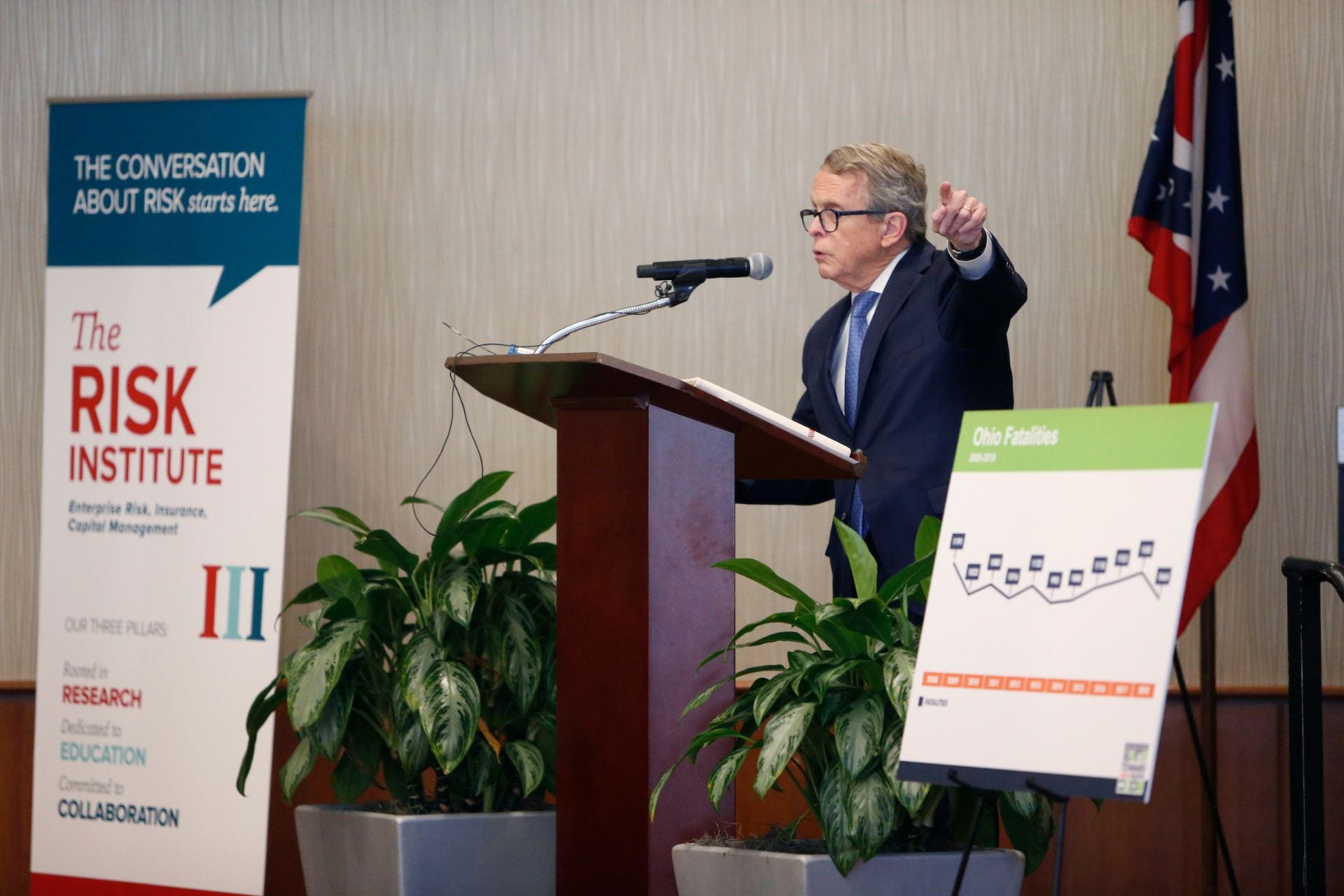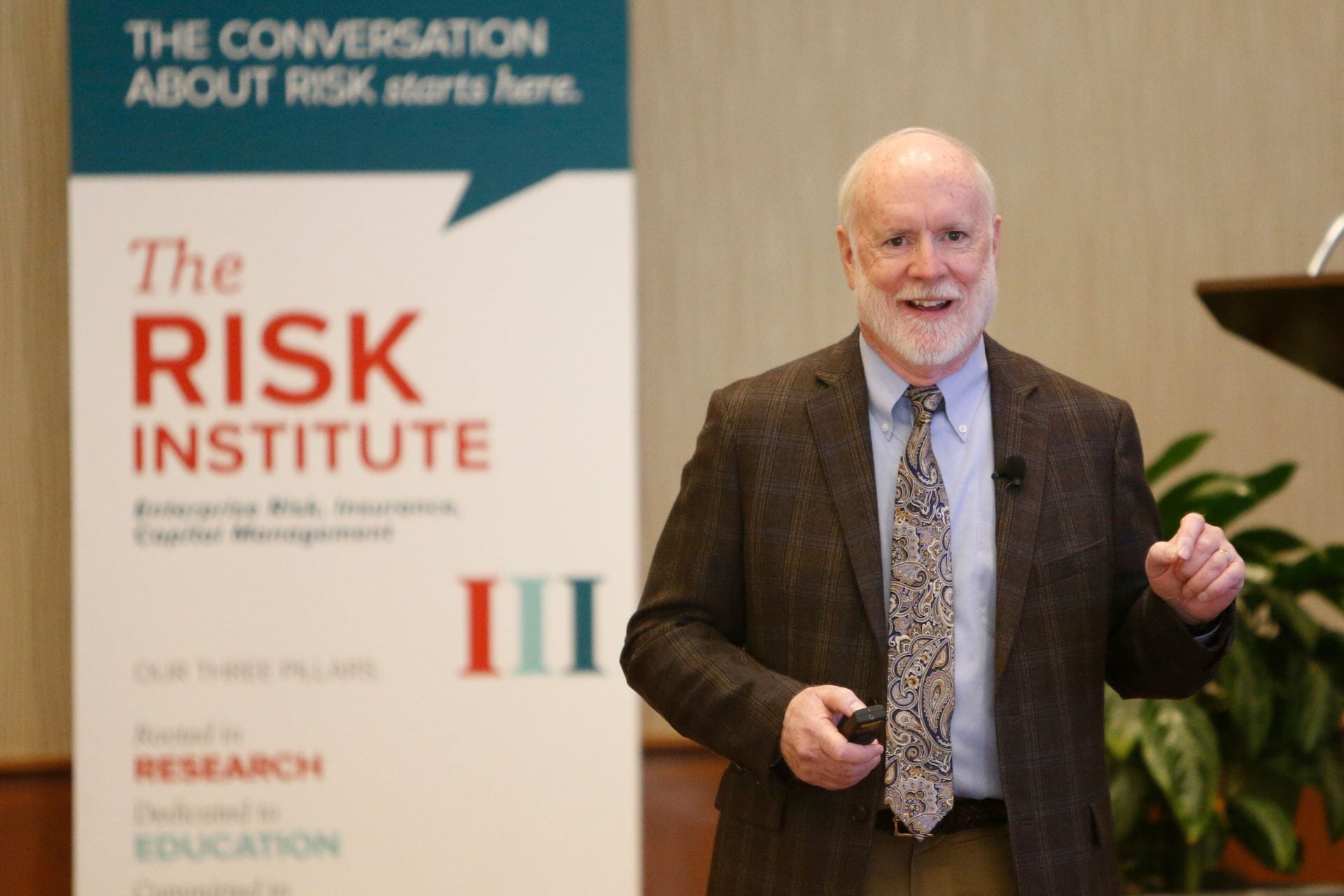


 Every day in the U.S., approximately nine people are killed and more than 1,000 injured in crashes that are reported to involve a distracted driver, according to the Centers for Disease Control and Prevention. The Risk Institute at The Ohio State University Fisher College of Business is working to bring those numbers down.
Every day in the U.S., approximately nine people are killed and more than 1,000 injured in crashes that are reported to involve a distracted driver, according to the Centers for Disease Control and Prevention. The Risk Institute at The Ohio State University Fisher College of Business is working to bring those numbers down.
Last week, the Risk Institute hosted Gov. Mike DeWine, WBNS anchor Dom Tiberi, university researchers and insurance experts to discuss the latest research and technology aimed at curbing distracted driving.
“Our phrasing is putting the brakes on distracted driving,” said Phil Renaud, executive director of the Risk Institute.
The Risk Institute is a collaboration of companies and researchers that work to understand and develop effective risk management strategies. The institute helps organizations understand and manage risk from legal, operational, strategic and financial perspectives, among others.
Renaud said the effort to reduce distracted driving must include solutions that go beyond new laws. He said behavior, technology and urban planning and design are needed to reduce accidents and save lives.
DeWine agreed. He said he views highway safety as one of his top priorities as governor.
“If you look at the essential function of government, certainly at the core, it’s protecting people and protecting our families,” he said.
DeWine said he will be releasing a final report from the Ohio Distracted Driving Task Force soon. The Ohio departments of Transportation and Public Safety formed the task force last year. Ohio State researchers and the Risk Institute joined law enforcement, highway safety officials, auto insurers and others working to develop recommendations for the task force.
“When you look at distracted driving, we have to change people’s attitudes,” DeWine said.
Tiberi delivered the most emotional message on the subject. In 2013, his daughter was killed when the car she was driving crashed into the back of a semi-truck at high speed.
Tiberi and his wife started a foundation that supports organizations that encourages defensive driving and educates about the dangers of distracted driving.
“The bottom line, folks, is we have an epidemic. Not only in Ohio but in the United States, and it’s claiming our youngest and our brightest,” Tiberi said.
Motao Zhu, associate professor in the College of Public Health, Zhenhua Chen, assistant professor in City and Regional Planning at the Knowlton School of Architecture, and Brittany Shoots-Reinhard, a research associate in the university’s CAIDe (Cognition and Affect in Decision-Making) lab, discussed the scientific challenges behind distracted driving.
Shoots-Reinhard said a study conducted by CAIDe found that 66.5 percent of drivers used their phones while their car was in motion at least some of the time. The researchers used the findings to develop more effective advertising to curb the behavior.
“We want to give them easy, positively framed messages,” she said.
Shoots-Reinhard said the messages have to offer not only memorable and emotional messages but also simple alternatives to avoid distractions. That includes reinforcing use of the “do not disturb” function on cell phones.
Industry experts featured new technologies that allow drivers and insurance companies to better track safe driving habits. In addition, community leaders from ODOT, Hilliard and Franklin County discussed the increased use of roundabouts to cut down on serious crashes.
This article originally appeared on Ohio State News.
 Come meet the Risk Institute team and mingle with 20,000 or so of your closest friends during the “Fan Fest” held before the Ohio State-Cincinnati game, September 7, 2019.
Come meet the Risk Institute team and mingle with 20,000 or so of your closest friends during the “Fan Fest” held before the Ohio State-Cincinnati game, September 7, 2019.




